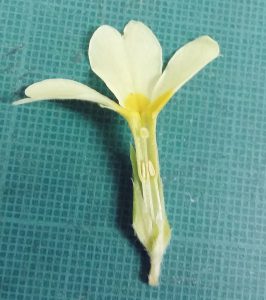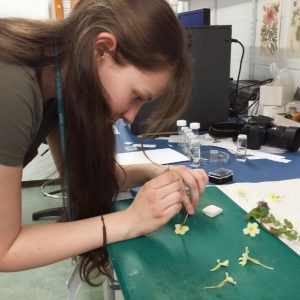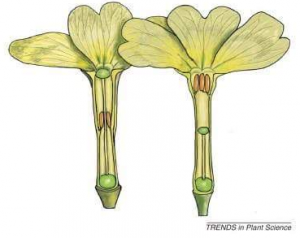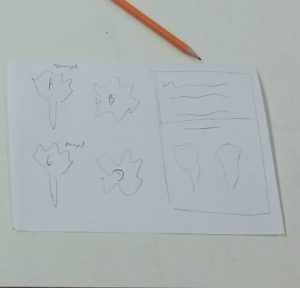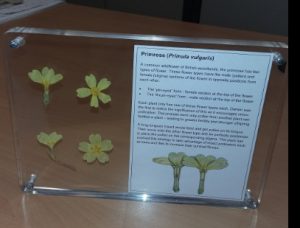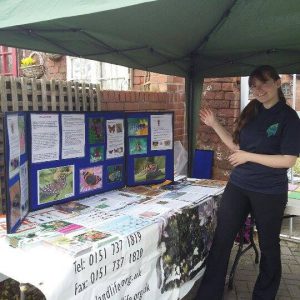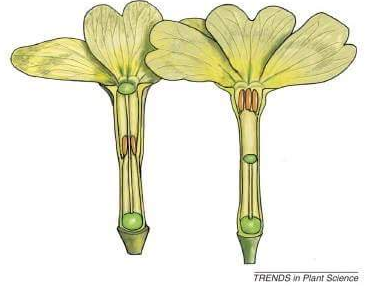
Hi again, that’s me slowly catching up on my blog entries. You’ll see why I’ve been so busy recently! So this might be a little longer than my previous ones.
Firstly, I’d like to chat about a little idea I have to do with pollination of wildflowers. It turns out that the World Museum, here in Liverpool, has a lovely little meadow oasis right next to the entrance. It’s great to have a little biodiverse green space right in the heart of the city. And I’m keen to take some wild flowers from this meadow to illustrate interesting pollination facts using common wild species. And in doing so, get to learn how to dissect and press plant specimens! Thought is would be a good way to get across how interesting the pollination ecology is to the public. The first flower that I’ve chosen to do is the Primrose.
Turns out this flower has two flower types – were the male (pollen and anthers) and female (stigma) organs of the plant are in opposite positions from each other.
- The ‘pin-eyed’ form – female section at the top of the flower
- The ‘thrum-eyed’ form – male section at the top of the flower
Botanists were aware of these forms for decades but had no explanation for it. Darwin was the first to notice the significance of these as they act to encourage cross-pollination. The process were only pollen from another plant of the same species can fertilise a flower – leading to greater fertility and stronger (more genetically diverse) offspring.
A long tongued insect would feed and get pollen onto its tongue. Then move onto the other flower type and be perfectly positioned to deposit the pollen on the corresponding stigma of a plant with the opposite flower form.
So working with the botany and technician team at the World Museum we put together a handheld ‘sturdy’ display of this plant. Excited to draw up the plans and then get to have it ‘in the flesh’. Pretty cool!
I’ve also been trying my hand at pollen samples. Practicing making up slides of different types of pollen and learning the different features under the microscope.
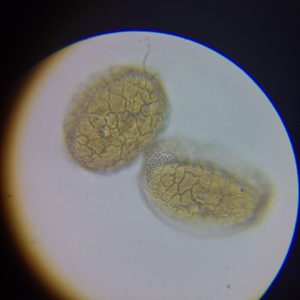
This is lily pollen. This net like structure around the pollen is apparently unique to this group of plants!
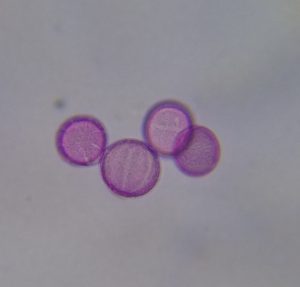
Normally when you make up pollen slides they are dyed so that you can better see the features on the pollen. This primrose pollen (which I had to include of course) has little lines all the way around each grain. Which you can see because of the purple dye.
I’ve also been to a few interesting conferences this month. The first one I went to was the Royal Entomological Society’s conference on Pollinators and Sustainable Agriculture. It was really interesting hearing about all the different research that’s going on across the country. A whole host of subjects were covered. Anything from how to quantify pollination services, how pesticides affect the development of bee larvae and even identifying the DNA of pollen that was washed off of hoverflies to see how they feed. Some really interesting research.
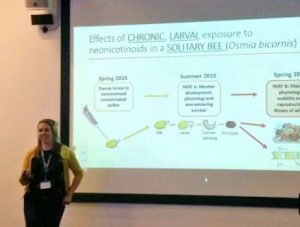
PhD student talking about her research on the Red Mason bee and how it may be affected by pesticides
I then went to another conference about how museums can connect people to nature. Some really thought provoking stuff about how we can reach people from all walks of life. Introducing nature, which is all around us, to give it meaning and purpose. Help to make nature accessible. Also got to meet Cathy, my Natural Talent predecessor at the World Museum. She worked with Hymenoptera in the entomology department too. It was great to meet her and hear about what she got up to during her time as a trainee.
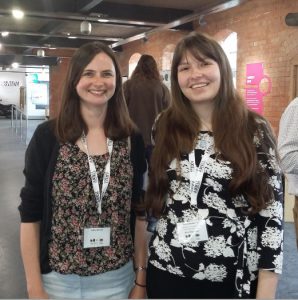
Me meeting Cathy a previous natural trainee at the NatSCA conference
Also been doing some events to engage the public here at the museum and at the National Wildflower Centre. For National Gardening week I ran stalls and kids activities to promote wildlife gardening for butterflies, bees and hoverflies. And even got to show folk how to fold their own origami butterflies. Which both adults and children seemed to enjoy!
Not to mention all the planning for future events. So all in all a busy month. Thanks for reading!

